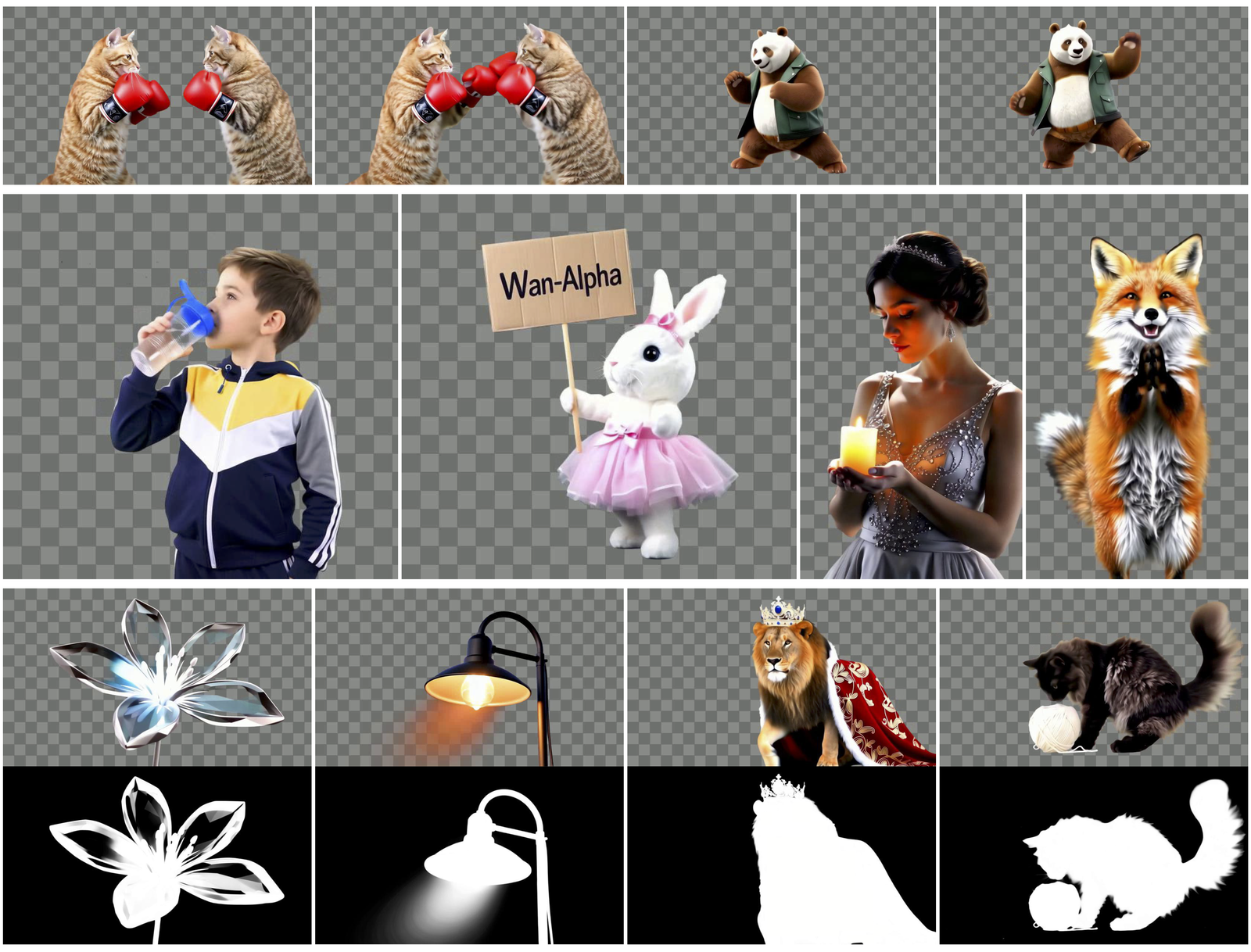Wan Alpha | text to video with a true alpha channel (open weights)

Share this post:
Wan Alpha | what matters
What it is
Wan Alpha is a text to video model that natively outputs an alpha channel. You get RGBA frames and video, so subjects arrive on transparency ready to composite over plates, graphics, or UI without keying. In demos the model produces clean edges on hair, reflections, glass, smoke, and other painful materials. For editors and motion designers this means faster iterations and fewer artifacts. For filmmakers it means faster previs and promo comps when you need animated elements that sit cleanly over live action without pulling a key or painting mattes.
Why filmmakers and editors should care
Most generators still bake the subject onto a background, which forces you to key or roto before you can use the shot. That wastes time and often leaves chatter on edges. Wan Alpha skips that. You can drop a generated element straight onto a timeline and focus on timing, framing, and color instead of cleanup. It is especially handy for HUD and UI overlays, product and logo motion, animated lower thirds, packshots, and floating FX details you want to place over a plate. If you work in a graphics heavy pipeline, the ability to export RGBA video and PNG frames keeps everything predictable. You can version quickly, hand off to teammates, and keep your comp tree clean.
How it works in plain language
Wan Alpha adapts Wan2.1 T2V 14B with LightX2V acceleration and adds a VAE and LoRA path trained to predict an alpha channel alongside RGB. At inference time you prompt for a subject and explicitly ask for a transparent background. The scripts export an RGBA video and a folder of PNG frames with the alpha baked in. A ComfyUI graph is provided for artists who prefer node based setups, while Python scripts cover batch runs. In practice you will get the best results when your prompt fixes shot size, subject, style, lighting, and the fact that the background is transparent. Treat it like directing a motion graphic rather than a full cinematic scene and you will see the cleanest mattes.
Film and VFX uses
- Previs and UI comps. Place animated subjects into edits without keys to test timing and readability.
- Motion graphics. Generate overlays for titles, icons, particles, and transitions as true RGBA elements.
- Product and packshots. Isolated foreground motion with clean edges on hair, glass, and smoke.
- Virtual production. Layer alpha elements over 2D or 3D plates for quick in camera or post comps.
License and commercial use
The Wan Alpha model card lists Apache 2.0 for code and weights, and the Wan2.1 T2V 14B base lists Apache 2.0 as well. That is permissive, but you still need to verify each dependency you enable, such as LightX2V, and follow any additional terms in the repositories or model cards. If you are shipping commercial work, confirm that your prompts, assets, and any third party materials are cleared. Keep a short record of prompts, seeds, and versions so shots are reproducible and auditable.
Sources
- Project page: https://donghaotian123.github.io/Wan-Alpha/
- Paper: https://arxiv.org/abs/2509.24979
- GitHub: https://github.com/WeChatCV/Wan-Alpha
- Hugging Face model card: https://huggingface.co/htdong/Wan-Alpha
- Base model: https://huggingface.co/Wan-AI/Wan2.1-T2V-14B



